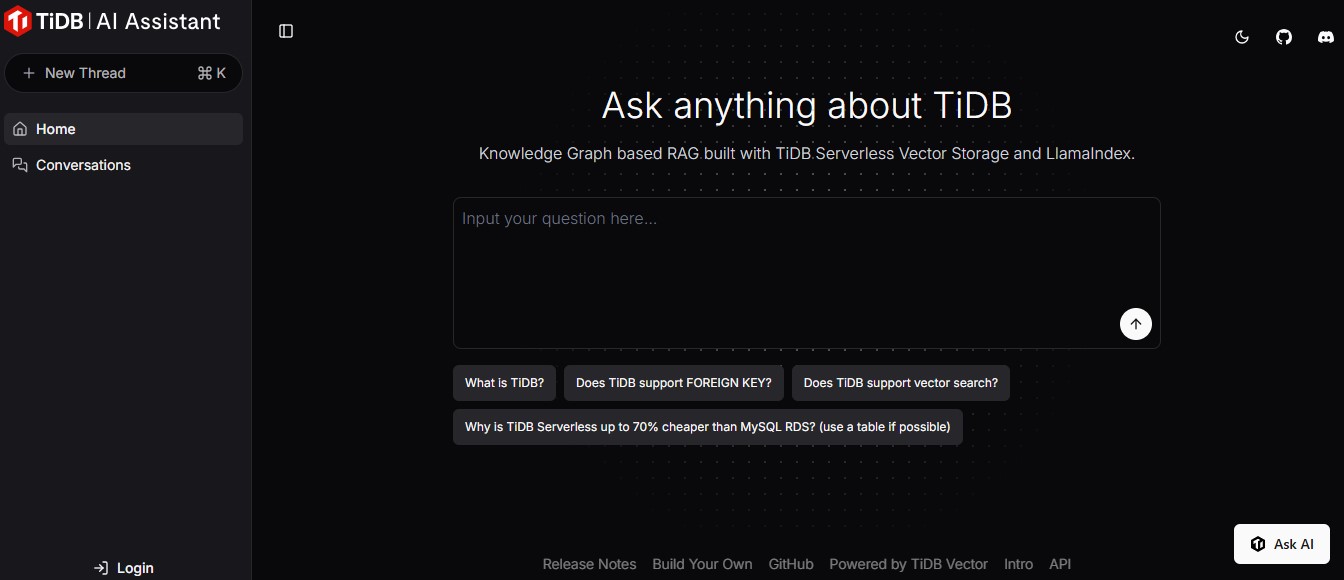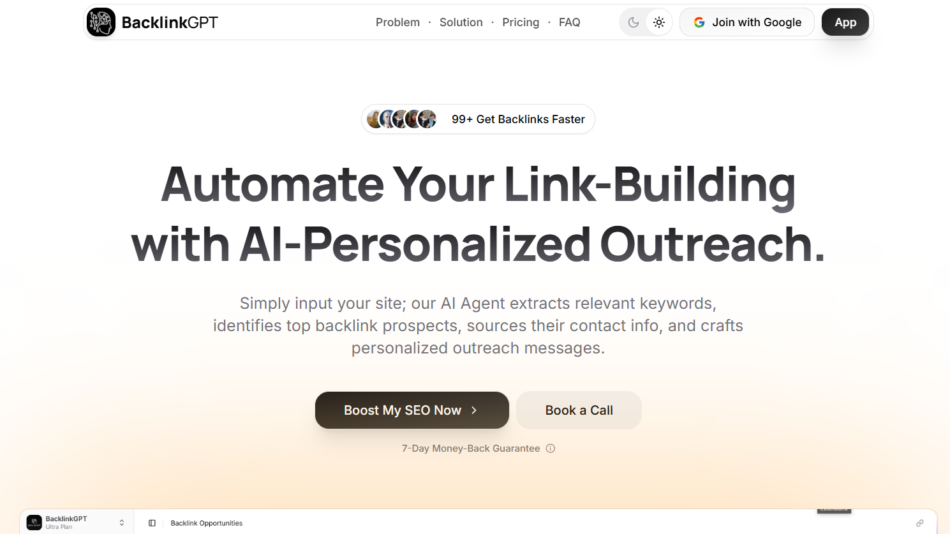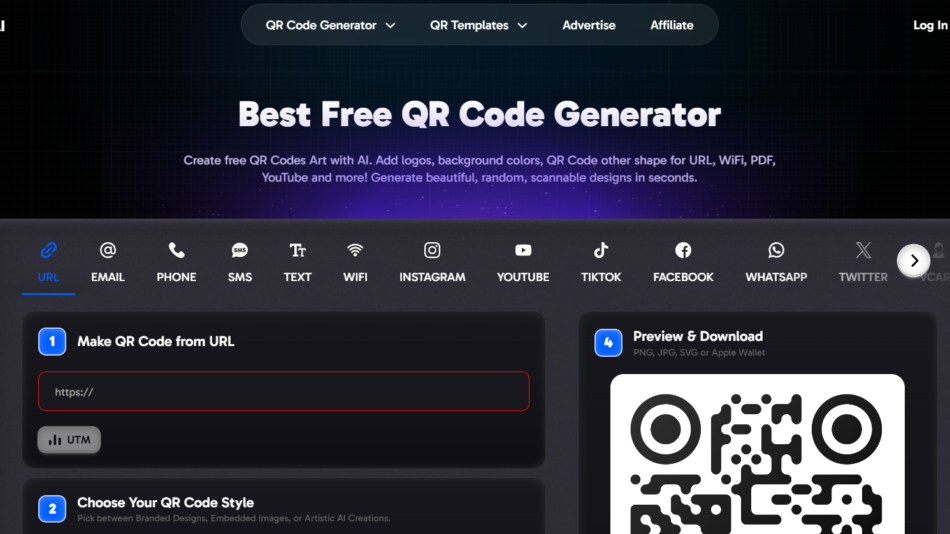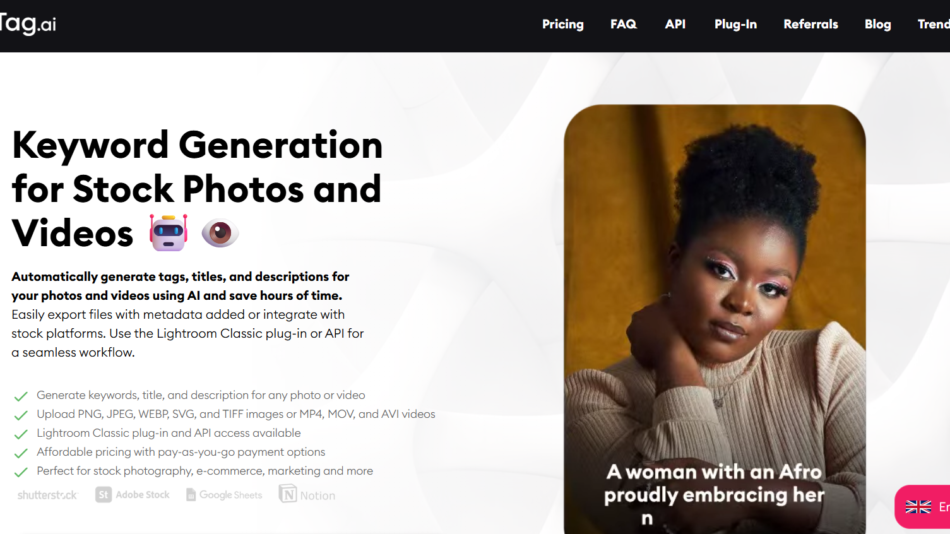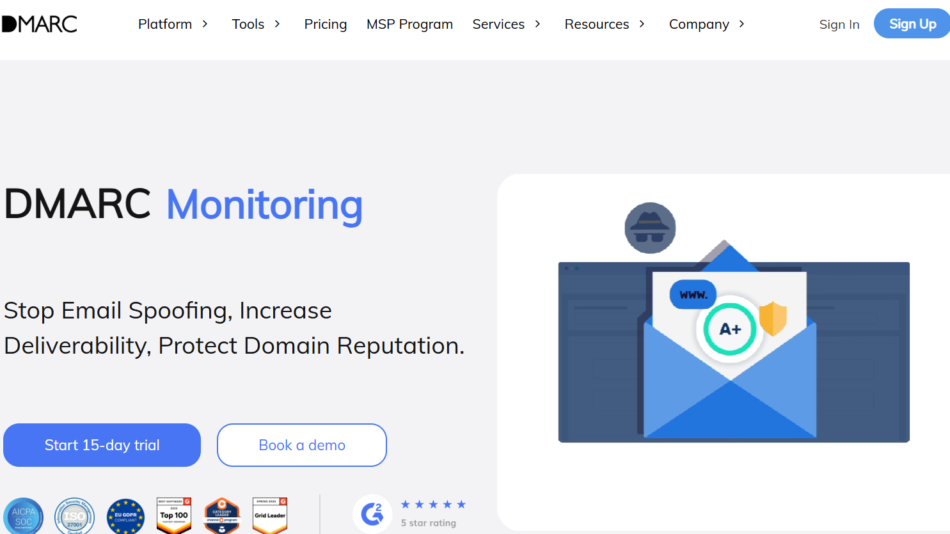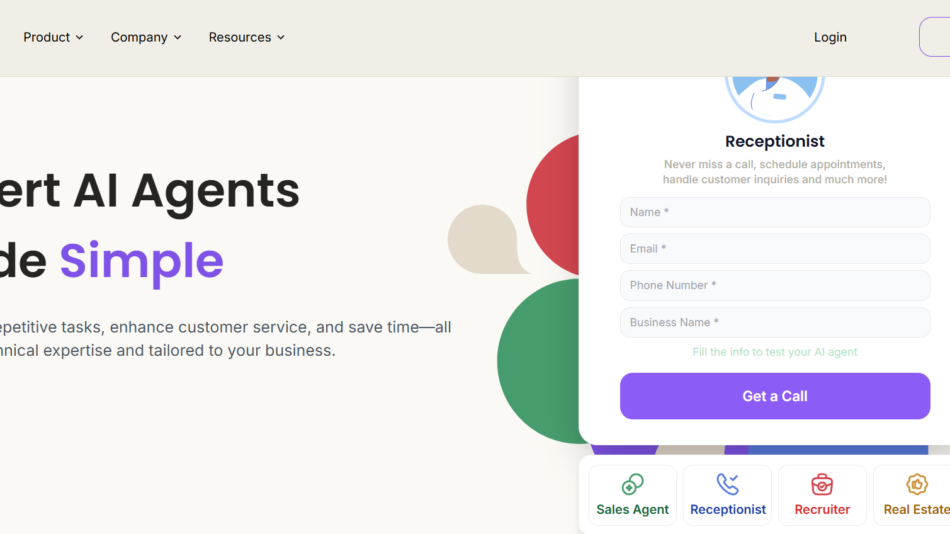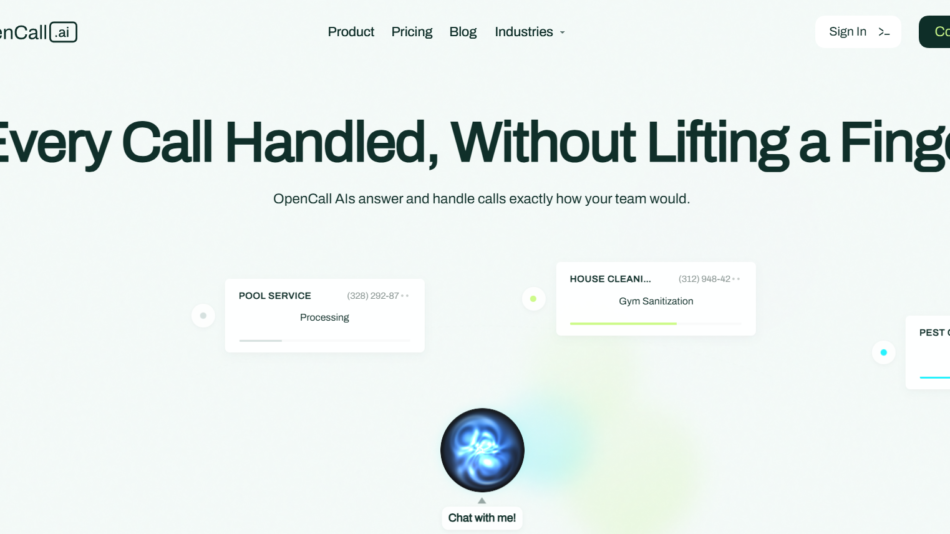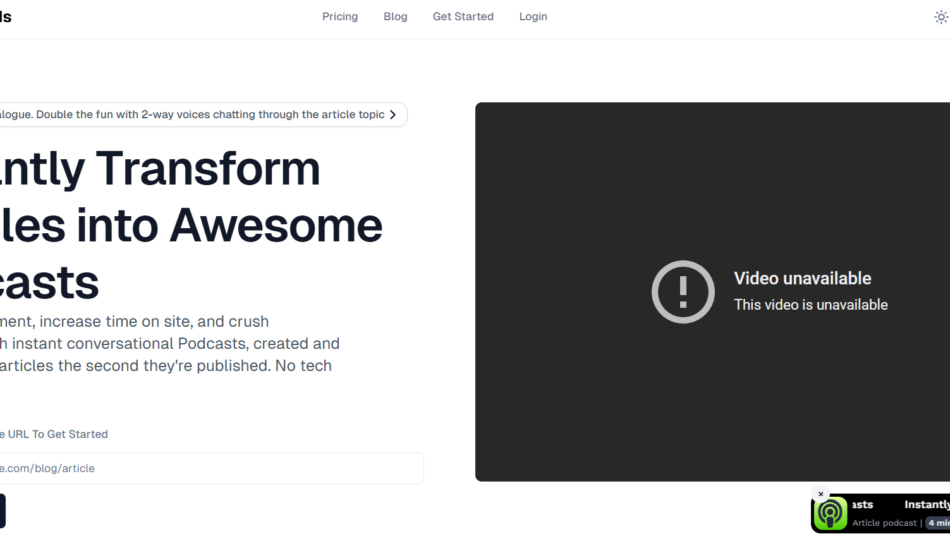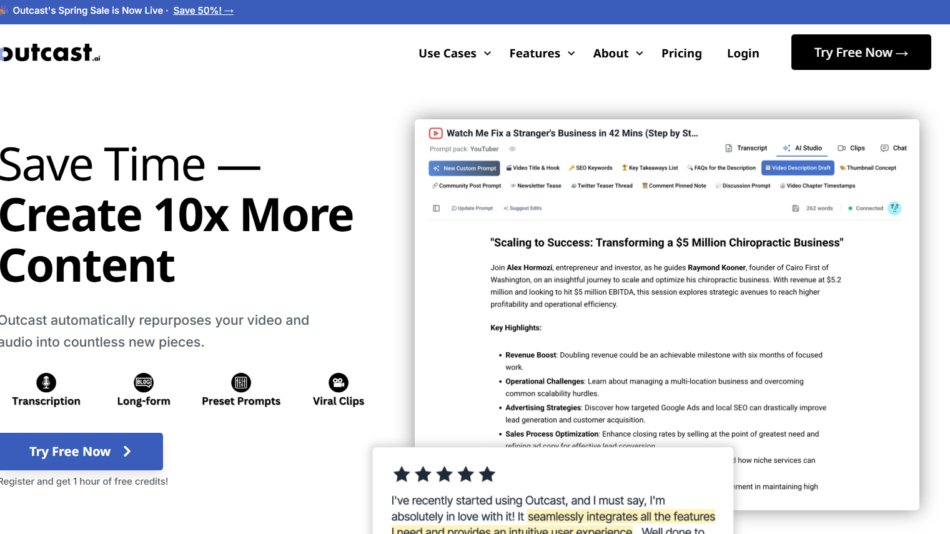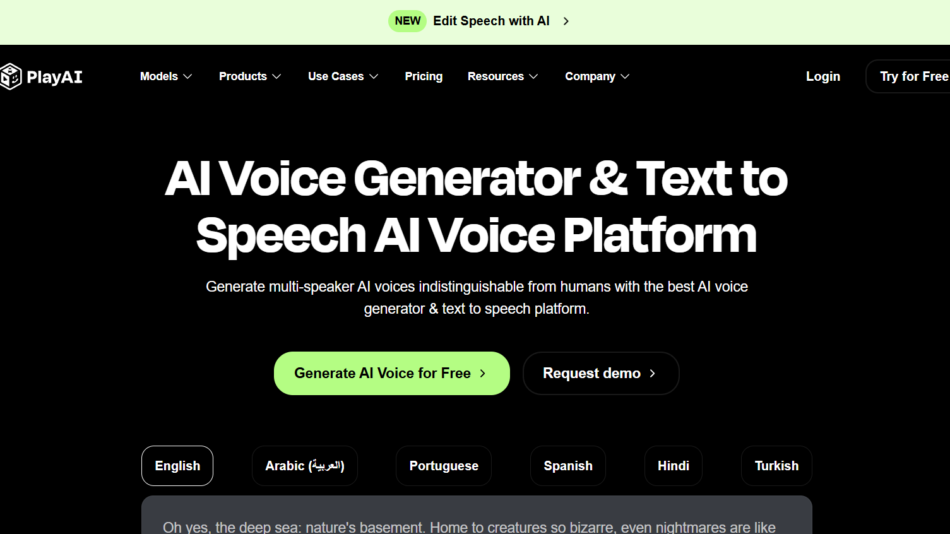TiDB is an open-source, distributed SQL database developed by PingCAP. It’s designed to handle large-scale applications with high availability and low latency, combining the best of both transactional (OLTP) and analytical (OLAP) workloads. TiDB’s key differentiator is its HTAP capabilities, which allow businesses to run both transactional and analytical queries simultaneously on the same data.
Built with horizontal scalability and MySQL compatibility in mind, TiDB offers developers and enterprises the flexibility to grow their database infrastructure as their applications evolve.
Features of TiDB
TiDB stands out with its innovative architecture and robust feature set. Here are the highlights:
- Distributed SQL Architecture
- TiDB splits data into smaller chunks and distributes it across multiple nodes for enhanced performance and scalability.
- Hybrid Transactional and Analytical Processing (HTAP)
- Run both real-time transactional and analytical workloads on the same dataset without additional infrastructure.
- Horizontal Scalability
- Easily scale your database horizontally by adding new nodes, ensuring seamless performance as workloads grow.
- High Availability
- Built-in fault tolerance and Raft-based consensus ensure minimal downtime and automatic failover in case of hardware failures.
- MySQL Compatibility
- TiDB is fully compatible with MySQL, making migration and integration straightforward for existing applications.
- Global Transaction Management
- Supports distributed transactions with strong consistency using a two-phase commit protocol.
- Real-Time Analytics
- Integrates seamlessly with TiFlash, a columnar storage engine, for running fast analytical queries.
- Cloud-Native Support
- Easily deploy TiDB in public clouds like AWS, GCP, or Azure, or use TiDB Cloud for a fully managed experience.
- SQL and JSON Support
- Use SQL for structured data and JSON for semi-structured data, providing flexibility in data modeling.
- Open-Source and Extensible
- TiDB’s open-source nature allows developers to customize and extend the platform to meet specific needs.
How Does TiDB Work?
TiDB uses a distributed architecture with multiple components to deliver performance, scalability, and reliability:
- TiDB Server
- Acts as the SQL layer, processing queries and coordinating data access.
- Placement Driver (PD)
- Manages metadata, cluster scheduling, and load balancing across nodes.
- TiKV
- A distributed key-value storage engine that handles transactional workloads with strong consistency.
- TiFlash
- A columnar storage engine designed for analytical workloads, optimized for real-time analytics.
This architecture ensures that TiDB can handle high concurrency, distributed transactions, and mixed workloads effectively.
Use Cases of TiDB
TiDB is versatile and serves a variety of industries and workloads. Here are some common use cases:
- E-commerce Platforms
- Handle large-scale transactions and provide real-time product analytics to improve customer experiences.
- Financial Applications
- Ensure data consistency, fault tolerance, and scalability for payment processing, fraud detection, and analytics.
- Gaming
- Manage in-game transactions, player data, and leaderboards with low latency and high availability.
- Data Warehousing
- Consolidate transactional and analytical workloads into one system for unified and real-time data insights.
- IoT Data Management
- Process high-velocity data streams from IoT devices and generate real-time analytics for actionable insights.
- SaaS Applications
- Provide scalable backend infrastructure for multi-tenant SaaS solutions with varying workloads.
Pricing
TiDB is open-source and free to use if self-hosted. For those who prefer a fully managed experience, TiDB Cloud offers flexible pricing options:
- Free Tier
- Includes a limited cluster size for testing and small-scale applications.
- Standard Tier: Pricing varies based on resource consumption
- Pay-as-you-go for compute, storage, and backup usage.
- Enterprise Tier: Custom Pricing
- Tailored for large organizations with advanced security, compliance, and dedicated support needs.
Visit the TiDB Cloud pricing page for detailed information.
Strengths of TiDB
- HTAP Capabilities: Combines OLTP and OLAP workloads, eliminating the need for separate systems.
- Scalability: Easily scale horizontally without downtime or performance degradation.
- High Availability: Fault-tolerant architecture ensures continuous uptime.
- MySQL Compatibility: Seamless migration for MySQL users.
- Open-Source: Fully customizable and extensible to meet specific requirements.
Drawbacks of TiDB
- Complexity for Small Applications: TiDB’s distributed architecture may be overkill for small-scale projects.
- Learning Curve: New users may require time to familiarize themselves with its architecture and components.
- Cost for Cloud Deployment: While self-hosting is free, managed services like TiDB Cloud can be costly for large-scale workloads.
Comparison with Other Databases
Here’s how TiDB compares to other database platforms:
- MySQL: While MySQL is widely used for transactional workloads, TiDB adds scalability and analytical capabilities that MySQL lacks.
- PostgreSQL: PostgreSQL excels in advanced features like JSON and GIS data but isn’t built for distributed, scalable architectures like TiDB.
- CockroachDB: Both are distributed SQL databases, but TiDB stands out with its HTAP capabilities and MySQL compatibility.
Customer Reviews and Testimonials
Here’s what users are saying about TiDB:
- Emma R., Data Engineer: “TiDB has been a game-changer for our e-commerce platform. It handles high transaction volumes effortlessly while providing real-time analytics.”
- John T., CTO at SaaS Startup: “The scalability and MySQL compatibility made our migration seamless. Our development team loves the flexibility TiDB offers.”
- Sophia L., Analyst: “With TiDB, we consolidated multiple systems into one, reducing costs and improving efficiency.”
Conclusion
TiDB is a robust, open-source database solution designed for modern applications that require scalability, fault tolerance, and real-time insights. Its ability to handle both transactional and analytical workloads on the same data makes it a unique and valuable tool for businesses across industries.
While it may have a learning curve for new users, its scalability, MySQL compatibility, and HTAP capabilities make it an excellent choice for growing businesses and enterprise-level applications.
Ready to scale your database infrastructure and unlock real-time insights? Visit the official TiDB website to learn more or get started today!
